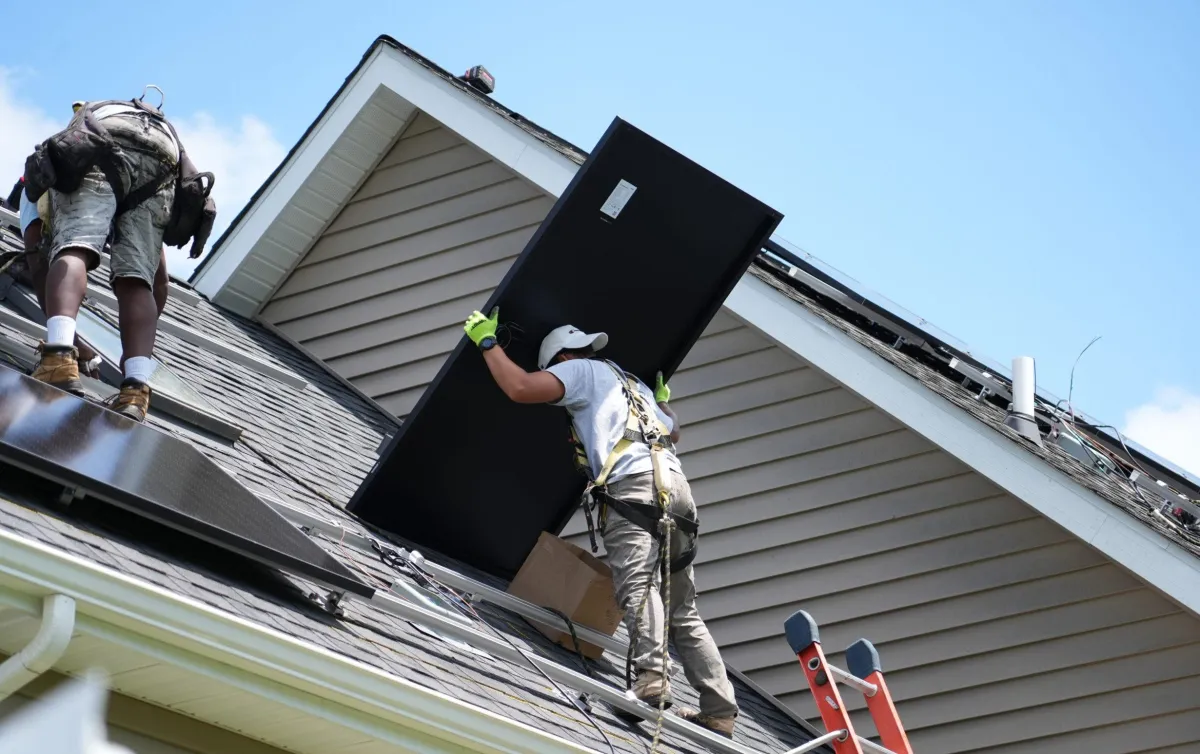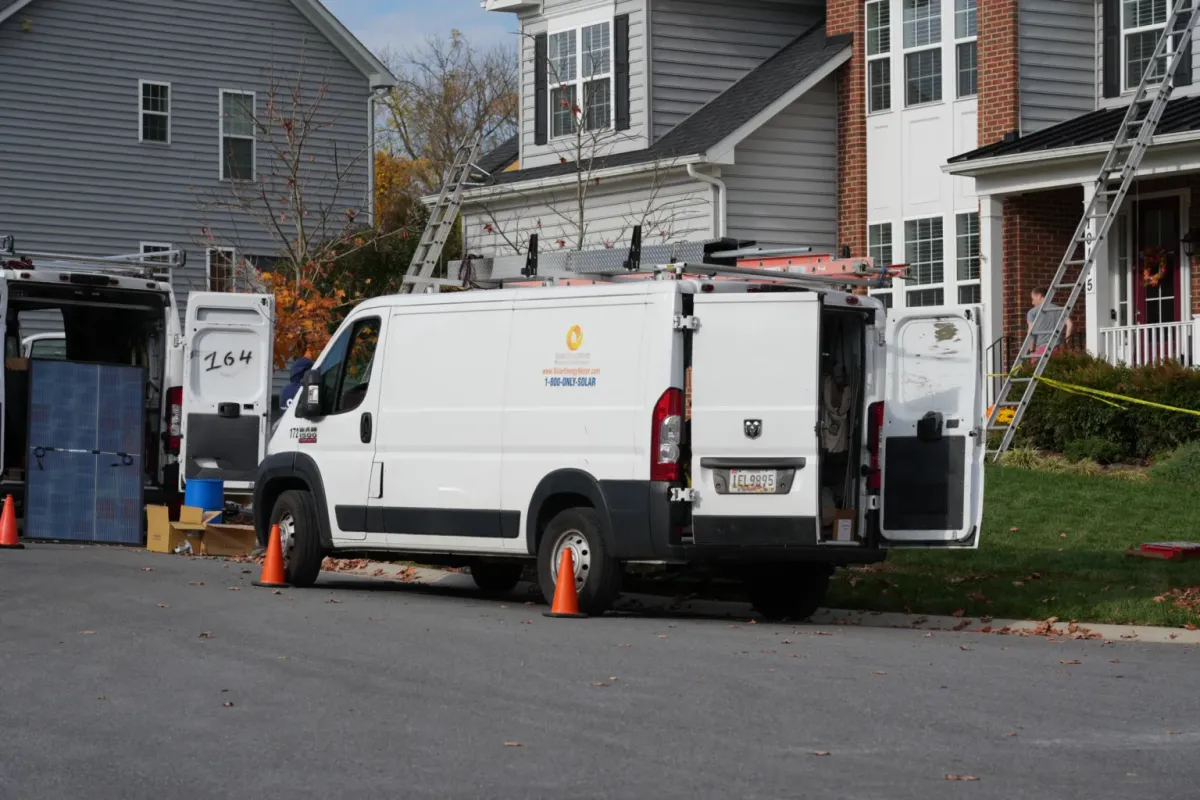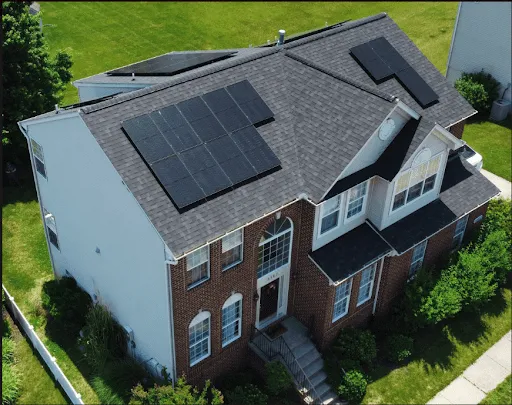How Does Solar
Work?
Solar power has been significantly improved over the years, becoming more efficient and cost-effective. Advances in technology now allow modern solar panels to generate more electricity from the same space. Additionally, as solar adoption grows globally, the cost of equipment continues to decline, making it an increasingly accessible energy solution.

See How Solar Works for Yourself

Power Your House
Your house uses the electricity you produce. It remains connected to the grid for backup, with options to store power in solar batteries.
Sell Excess Power
Generate your own power and sell excess electricity back to the grid. Learn more about how SRECs work.
Convert Sunlight into Electricity
Solar panels convert sunlight into electricity. Increase panel installations to boost power generation.
Convert to AC Power
An inverter converts DC power from panels to AC power usable in homes.
Monitor Performance
Use a monitoring system to track power generation in real-time. Excess power pushes your electric meter backward!

Solar Installation Process
Discover our streamlined installation process, designed to be efficient, hassle-free, and tailored to your needs. Our expert team ensures a seamless transition to renewable energy with minimal impact on your daily routine, making it easier than ever to embrace a sustainable future.
Solar Options By State
Explore the solar options and regulations specific to your area. Learn how local policies, incentives, and programs can help you optimize your investment in renewable energy and unlock the full potential of solar power.

Unlock More The Sun Savings Knowledge
What is solar energy?
A solar energy system creates usable power from sunshine. There are two basic kinds of systems: Photovoltaic or PV uses sunlight to generate electricity. It’s the same technology found on pocket calculators, just on a larger scale. PV systems can be designed to generate the majority of the electricity used in your home, or just a portion of it.
How long will my solar energy system last?
A typical solar energy system is built to be durable and long-lasting. Most solar panels come with a warranty of 25 to 30 years, but they can continue to produce electricity at a slightly reduced efficiency after that period. With proper maintenance, the entire system, including inverters and batteries if used, can last well beyond the warranty period, providing decades of renewable energy.
How much does a solar energy system cost?
The cost of a solar energy system varies based on factors like location, size of the installation, and additional features like battery storage. On average, residential solar systems can range from $15,000 to $25,000 before tax credits and incentives. Many states offer subsidies, and federal tax credits can reduce the cost by up to 26%. Financing and leasing options are also available to make solar more accessible.
What is the solar panel installation process?
Our installation process is designed for simplicity and efficiency. It starts with a free solar analysis to evaluate costs and benefits, including potential rebates and incentives. Once you’re ready, a certified technician conducts a site assessment to finalize the design and begin permitting. Installation typically takes 2-3 days, after which we handle all inspections and grid connections. We also manage the paperwork for all solar incentives to ensure you get the maximum financial benefit. Continuous remote monitoring of your system ensures optimal performance and quick resolution of any issues.
Want a Free Solar Estimate?
Fill out the form to get started today.

